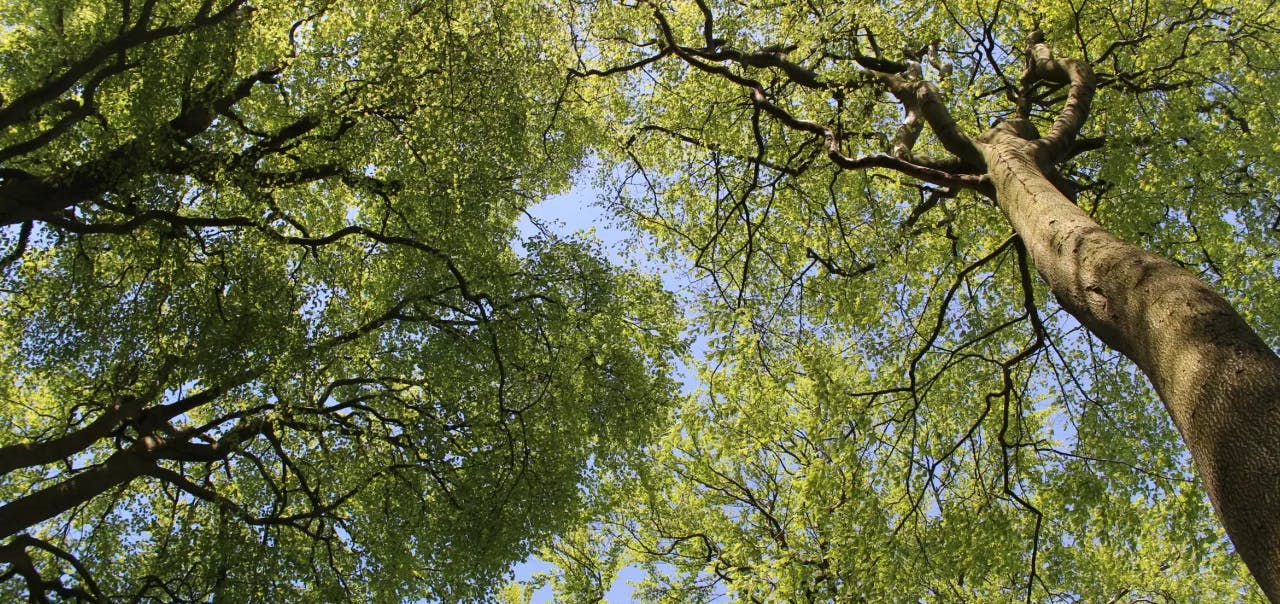In late September 2023 my team and I arranged a trip to Holland for key UK decision-makers, to see how the Dutch have been trying to deliver Lawton-style conservation for decades just the other side of the channel.
They were turning large areas of land over to natural processes – in some cases driven by large herbivores, in others linked to sustainable industrial extraction for building materials – and then joining these areas up through a strategic programme of green motorway crossings.
None of these things were happening in the UK and we wanted to get some ideas as to why and what we could do about it. On that trip was the future co-founder of Rebuilding Nature, from National Highways, Steve Elderkin, alongside senior colleagues from statutory agencies. At the end of the trip everyone agreed we needed to find a way to change things.
In parallel it was becoming increasingly clear to me – as the MD of a high integrity voluntary carbon start-up based on restoring carbon rich habitats across the UK – that the pipeline of buyers simply wasn’t there to cashflow a stand-alone nature-based solutions business. And, as other similar start-ups began to blink out around us, I again began to wonder how we could change this. So, my Wilder Carbon colleagues and I convened some 60 individuals from companies and organisations that wanted to be truly nature positive and asked them what was preventing them from making the much talked about and anticipated “wall of green finance” into a real mechanism for large scale nature restoration in the UK.
Together we realised that a key barrier was that there isn’t a collective scaled investment vehicle to show corporate/ carbon/ biodiversity/ water quality/ ESG/ compliance/ CSR/ philanthropic funders, buyers and investors that if they put money into something locally in the UK it will genuinely contribute to something greater than the sum of its parts nationally.
There have been lots of reports; studies; and theoretical commitments across many major disciplines and policy areas as well as multiple governments and companies all pointing to the need to restore nature at scale. The UK even signed up to the 30x30 international biodiversity targets at Kunming in 2022. But no-one had taken the lead in defining what this means on-the-ground for the landowners, communities and individuals, businesses, and the economy as a national endeavour.
Talking this through in a meeting room in Cambridge in early 2024 with senior civil servants everyone agreed what was needed, but no-one felt able to take responsibility for it. It fell between too many institutional responsibility cracks. The result was no simple-to-communicate positive vision for what making 30% of our land and 30% of our sea nature rich would mean for our country and its people.
Steve and I realised that we needed as many actors from beyond the normal “conservation” space to own this vision and help make it real; that treating nature as vital infrastructure – which is what we all agreed is needed – required financial and emotional investment across society based on the premise that more nature will benefit UK PLC and UK citizens.
We needed to create and market a multi-decadal roadmap and delivery framework. And to use this to prove nature’s worth to get people on side. Steve works on the Strategic Road Network which provided the blueprint for Treasury funding allocations. We clearly needed the same for nature. Plus, models like Sustrans, showed the power of common visions as pre-cursors to getting money behind them and making them happen. This is where the idea of building a Strategic Nature Network (SNN) through a pan-sectoral alliance – Rebuilding Nature – came from.
We saw adopting the right language as crucial. The choice of wording for the Rebuilding Nature alliance itself was selected to simply and actively communicate that this is a pro-growth building project with nature as its building blocks. It is not about nice-to-have wildlife. It is about must-have infrastructure.
The SNN needs to evolve as a physical construct whilst existing as a fully-fledged vision that iteratively collates and communicates the national-level co-benefits that will be delivered by transforming big “blobs” of degraded land and sea into robust nature rich habitat, delivering the ecosystem services that will make individuals, communities, regions, and ultimately the whole of the UK more resilient.
These blobs, we began to think, after more consultation, could be labelled Nature Investment Zones (NIZs). They could provide a unifying, larger and more investible and ecologically meaningful standard geographic unit for smaller pre-existing landscape schemes e.g. Landscape Recovery Programmes to sit within. And they could be designed and implemented by pre-existing coalitions of delivery organisations including eNGOs, removing some of the confusion and complexity of each using their own brand and terminology when talking about their landscape conservation ambitions.
These NIZs could then be physically connected through genuinely permeable landscapes (assisted by other pre-existing schemes like Local Nature Strategies or approaches like Nature Friendly Farming) by green crossings over (or under) linear infrastructure to enable species movement. This would decrease the risks that ecosystem functionality is lost in future as the climate changes. This, in turn, would protect investments made in these ecosystem services giving assurance to financiers.
Testing and refining these ideas over took the next 6 months and led to the formation of a cross-sectoral Steering Group which helped solidify the Rebuilding Nature “brand” via an ever-increasing coalition of supportive companies, organisations and individuals – some of whom have now given us a firm financial footing to provide a secretariat to the emerging pan-sectoral delivery alliance that is now the Rebuilding Nature.
The mantra we have had all along is to create the broadest possible umbrella to encapsulate all the different ways in which nature is vitally important for so many stakeholders i.e. how it amounts to critical infrastructure for UKPLC, to ensure that we have the highest possible chance of leveraging investment into this degraded asset. This resilience is derived from improving food and timber security. It takes in natural flood, drought and water quality solutions. It reduces the UK’s carbon emissions and locking up additional carbon in multiple terrestrial and marine habitats whilst boosting industries like fishing. This improved resilience is available to the UK at a fraction of the cost of alternative, less effective human-built options.
What has also became clear whilst creating Rebuilding Nature is that society beyond government needs to provide the consistency of approach for, and commitment to, this multi-decadal project. Politics is too short term. We might all need to compromise a bit, but in doing so we can strengthen one another’s positions by using the same lexicon and pointing to the same vision when making the case for nature investment with our finance directors, or our communities, our local and national decision-makers.
Scaling nature restoration is a no-regrets solution that we can work for everyone across society. This might mean sacrificing a bit of personal or organisational ego/ a bit of profit/ a bit of time and effort but by all overtly pulling in the same direction we can create something truly strategic to make the UK a better place for people.
This is about people. Nature will take care of itself, it is adapting into something new, and if we allow it to do so by giving it the space to be dynamic it will continue to do so. This will, in turn, help protect us from the worst of flooding/ heat and crop failure. None of this is about trying, King Canute-like, to preserve things in aspic. Species are moving c.o. climate change. We need to enable them to do so, so that the ecosystems services we need to survive are maintained.
Yes, building the SNN is only one part of delivering fully-fledged resilience for the UK. But, making 30x30 into a real, physical thing increases our chances of succeeding more broadly (e.g. with our climate targets). Not doing it worsens the situation and will leave our kids and grandkids asking why we didn’t find a way to overcome bureaucracy and the desire for perfect double-digit financial returns rather than actually doing something when we had the chance.
The SNN is for everyone across the UK. NIZs are a perfect vehicle for regional adoption and delivering visible local benefits in an increasingly devolved political context. We need to get the nature is health/ economy/ security message across to everyone and, we can only do this by demonstrating things on the ground where everyone can feel the benefits for themselves.
We cannot continue to just track the catastrophic decline of nature that now puts the UK at the bottom of the international pile in terms of nature degradation, despite acknowledging that this puts our economy at ever increasing risk in our increasingly unstable world.
It is time to create a virtuous circle by working together across sectors to deliver a collective physical investment vehicle across the whole of the UK on land and at sea. Nobody else is going to do it for us. But by working together we can tip the balance in favour of nature restoration to benefit people everywhere. Demonstrating nature’s worth at multiple geographic levels will make investing it more palatable for consumers and politicians alike despite short-term electoral cycles and every decreasing public spending.
A strong collective voice in favour of nature restoration ambition and demonstrating regional level delivery with strong private sector financing behind it, can change things in our favour.
We can create a Strategic Nature Network for everyone if we work across sectors under a single simple mission. This is what Rebuilding Nature is all about.




